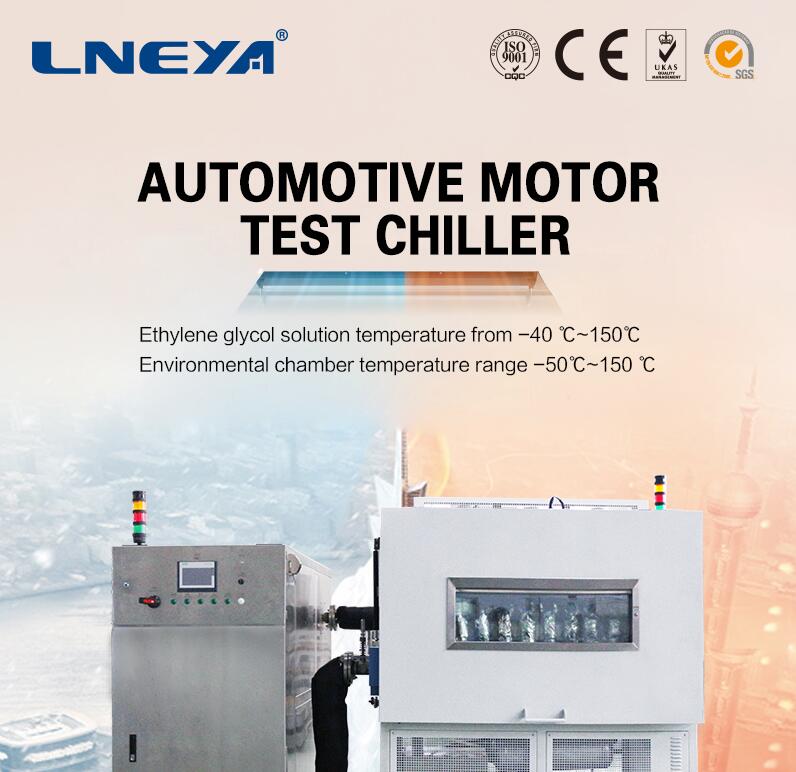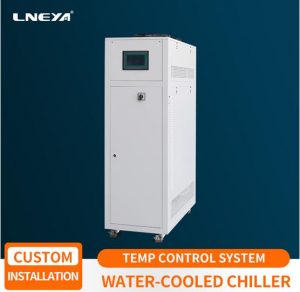Motor test chiller compressor causes wear
Motor testing chiller oil quality may be one of the main reasons affecting crankshaft wear. If the engine oil is used in the chiller refrigeration system, the engine oil that does not meet the requirements and is of poor quality may cause crankshaft wear. High-speed multi-cylinder compressors have high requirements for the quality and lubrication performance of the motor test chiller oil due to high speed, high load and high exhaust gas temperature.
Motor test chiller refrigeration compressor oil selection in addition to the choice of compressor type, but also according to the type of refrigerant used in the refrigeration system, commonly used ammonia, R23 and R22 and R404a, etc., taking into account the motor Test the chiller operating conditions (such as exhaust temperature, pressure, etc.) of the refrigeration system when different refrigerants are used, all of which will affect the lubrication conditions of the refrigeration oil, so the choice of motor to test the chiller oil must consider the refrigerant used, This is related to the mutual solubility of the refrigerant, high and low temperature performance, no water content, and high chemical inertness with the refrigerant.
If the viscosity of the oil is too low and the lubricating oil is not clean, the motor will test the chiller crankshaft for abnormal wear and damage. Therefore, the refrigerating machine oil of suitable quality and suitable viscosity grade must be selected in strict accordance with the technical specifications of the motor test chiller compressor. In addition, in the process of using the motor to test the chiller, it is necessary to strengthen the cleaning of the lubrication system, clean the compressor regularly, and replace the new oil to ensure that the crankshaft of the compressor is always in a good lubrication state.

Motor test chiller operation often occurs in the wet stroke, the compressor wet stroke is the liquid into the crankcase, mixed with the frozen oil and foam. The lubrication effect of the friction parts of the motor test chiller is reduced to increase the wear. The use of high-efficiency oil separators and adjustment of refrigeration conditions can effectively prevent the wet stroke phenomenon of the refrigeration system.
The motor test chiller crankshaft upper axle and connecting rod bushings are mostly made of babbitt. Motor testing of impurities or wear metal particles in the chiller alloy can cause increased crankshaft wear if embedded in the metal layer. Therefore, the motor test chiller should use high quality bearing pads or periodically replace the bearing pads to prevent or slow the crankshaft wear.
The motor test chiller runs more in the new energy vehicle motor test, so it needs specific attention to its operating state to ensure efficient operation.
Related recommendations
-
Semiconductor production process and testing process temperature control unit
1434LNEYA semiconductor testing process chiller
View details -
How to deal with the malfunction of Industrial Water Chiller System?
1761What's wrong with the Industrial Water Chiller System when it fails to cool down? Let LNEYA explain it to you below: One reason is that the initial use of liquid chiller system fails to reduce the temperature, or there is something wrong with ...
View details -
High and low temperature humidity test chamber performance
18181. It has wide temperature control range, which can meet the needs of users.2. With a unique balanced temperature control method, with stable and balanced heating capacity, high precision and high stable temperature control can be carried out;The ...
View details -
Instructions for use of the enclosed cooling and heating circulator of LNEYA, a chiller manufacturer
1384In the chemical and pharmaceutical field,the closed cooling and heating circulator is a cooling and heating temperaturecontrol device that cooperates with various types of reactors, jacketed tanks,reactors, extraction equipment and other equipm...
View details
 LNEYA Industrial Chillers Manufacturer Supplier
LNEYA Industrial Chillers Manufacturer Supplier













